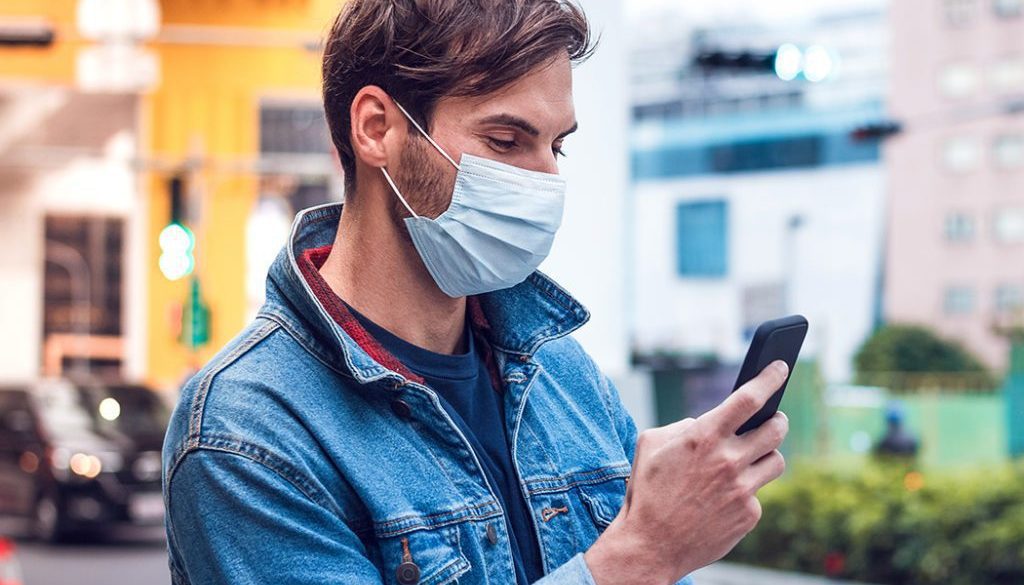Preventing the Spread of COVID-19 Misinformation
As COVID-19 spread across the world, so did conspiracy theories and misinformation about the virus. The proliferation of COVID-19 misinformation – labeled an “infodemic” by the World Health Organization (WHO) – made it difficult to identify trustworthy sources and threatened public health by undermining confidence in science, governments, and public health recommendations.
The consequences of COVID-19 misinformation can be catastrophic. In August 2020, the American Journal of Tropical Medicine and Hygiene published a report in which it was claimed 800 people had died, 5,876 people had been hospitalized, and 60 people had completely lost their sight after drinking methanol as a cure of coronavirus – and this was the consequence of just one false rumor. The report´s authors identified 2,311 cases of COVID-19 misinformation.
More recently, nature.com published the results of a controlled study in which 4,000 US citizens were exposed to misinformation relating to COVID-19 vaccines. As a result of being exposed to the misinformation, there was a 6.4% decline in the number of citizens that said they would definitely accept a vaccine – raising concerns that a decrease in vaccine uptake will decrease the potential for herd immunity, which in turn will have an impact on entire communities.
The Vaccine Conundrum for States, Employers, and Businesses
Much of the misinformation that spread at the time of the first COVID-19 outbreak is now regarded as old news; and, as subsequent waves of the virus have touched more people, the rumors and conspiracy theories that were considered to be true by COVID doubters are mostly forgotten. However, concerns about the vaccine uptake raise a conundrum for states, employers, and businesses about whether they should mandate vaccinations.
States and employers have a duty of care to provide a safe environment and protect people from harm. If they fail to do so, they could be subject to legal action. (There is a number of cases already filed against state and local government relating to COVID-19 actions and policies – or the lack thereof). Similarly, businesses have to decide whether they will insist on proof of vaccination before allowing customers onto their premises to mitigate the threat of legal action.
According to a February 2021 survey, most employers are still undecided about whether to mandate COVID-19 vaccinations as a condition of employment despite guidance from the Equal Employment Opportunity Commission stating it was okay to do so – subject to several exceptions. While their indecision may be attributable to their legal liability if employees suffer side effects, it is also the case that many states are introducing legislation to prevent mandatory vaccinations.
Consequently, 87% of respondents to the survey said they would provide information to employees about the benefits of getting vaccinated and how to get vaccinated. Many of the respondents were also willing to provide on-premises vaccinations and paid time-off to receive the vaccine and recover from any side effects. While not resolving the issue of how to accommodate those who refuse to get vaccinated, the employers´ approach appears to be a good compromise.
How to Best Communicate the Benefits of Vaccination
With vaccine misinformation circulating online, on social media, and within groups of friends and families just as much as COVID-19 misinformation was circulating at the start of the pandemic, it’s key that communities and employees receive the proper information surrounding COVID-19. One of the best ways to attract attention to genuine information from a trusted source and engage communities and employees is which a mass notification solution.
By leveraging a mass notification solution, public health officials and business leaders can send crucial information regarding the coronavirus vaccine to disseminate the false information that has been spreading. The more accurate information that is readily available from trusted sources such as the CDC and WHO, the less likely citizens and employees will be to believe some of the falsehoods. To help guide this process, the CDC has a page dedicated to stopping the spread of rumors.
Sharing accurate information over various modes of communication can ensure everybody receives the message. For governments and employers that have a multi-modal mass notification solution, messages can be sent via text message, email, voice call, digital signage, social media, and more. Additionally, utilizing SMS opt-in would be a great feature for those worried about alert fatigue – especially if the feature is used to encourage more younger people to get vaccinated.
Further Uses for Mass Notification Solutions during the COVID-19 Pandemic
Last December, we launched our Vaccine Distribution Solution to aid state and local agencies charged with managing vaccine distribution in their regions to identify and communicate with vulnerable populations, deliver tailored guidance and logistical information, and leverage ongoing check-ins to ensure the success of vaccine rollout. A similar solution is also available to employers with large workforces.
Since the launch of the Vaccine Distribution Solution, it has become apparent some vaccines doses are being wasted due to no shows and because, if you open a vial containing six doses but only have four people to administer the vaccine to, the remaining doses cannot be refrigerated again. However, using the geo-polling capability of the Vaccine Distribution Solution public agencies and employers providing on-premises vaccinations can avoid wasting doses as described in this blog.
Public health agencies and employers are generally regarded as the most trusted sources of COVID-19 information, and there are many ways in which it is possible to take advantage of that trust to support healthier communities and workforces. Therefore, if your organization would like to know more about our mass notification solution, Vaccine Distribution Solution, or the geo-polling capabilities of Rave Alert, do not hesitate to get in touch and speak with one of our team.





